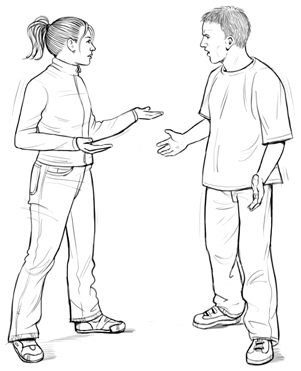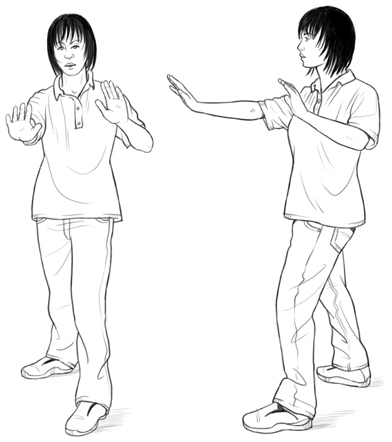
The classic ‘open hand’ threat is an aggressive posture, ‘pecking’ with the head, arms spread wide to look bigger. It is usually accompanied by striding about, almost circling the victim, and shouting or snarling threats and abuse. Your fence should go up as soon as you see signs of aggression – even just an angry expression.
The Fence
The fence posture is in many ways quite similar to a combat stance, but it is fundamentally different in that it is a situation control tool, not a fighting stance. There are many variations on the theme, but the basic form of the fence is:
• Strong side back, weak side forward (i.e. left hand forward if you are right-handed)
• Feet about shoulder width apart
• Feet turned in and knees slightly flexed
• Appears casual and non-threatening, i.e. hands are open
• Places one or both hands as a physical and psychological barrier between you and the aggressor

The fence does not look aggressive in the way that a combat stance does, but it gives most of the same advantages. It allows free movement and rapid attack or defence, but does not give away your intentions. Most of all, it is designed to keep an aggressor at a distance.

If the aggressor is outside the fence, he cannot launch an attack from close range and is deprived of that advantage. From the security of your fence you can attempt to de-escalate the situation.
… If He Closes In
If an open-hand aggressor closes in and starts prodding or pushing it is obvious that he wants to escalate the confrontation. It may be possible to bring matters to a close by shoving him away and warning him to keep his distance, and it is probably worth trying this. Assertive action at this point may possibly prevent an attack, and if it happens then it would have happened anyway – but at least you have given yourself some space to react.